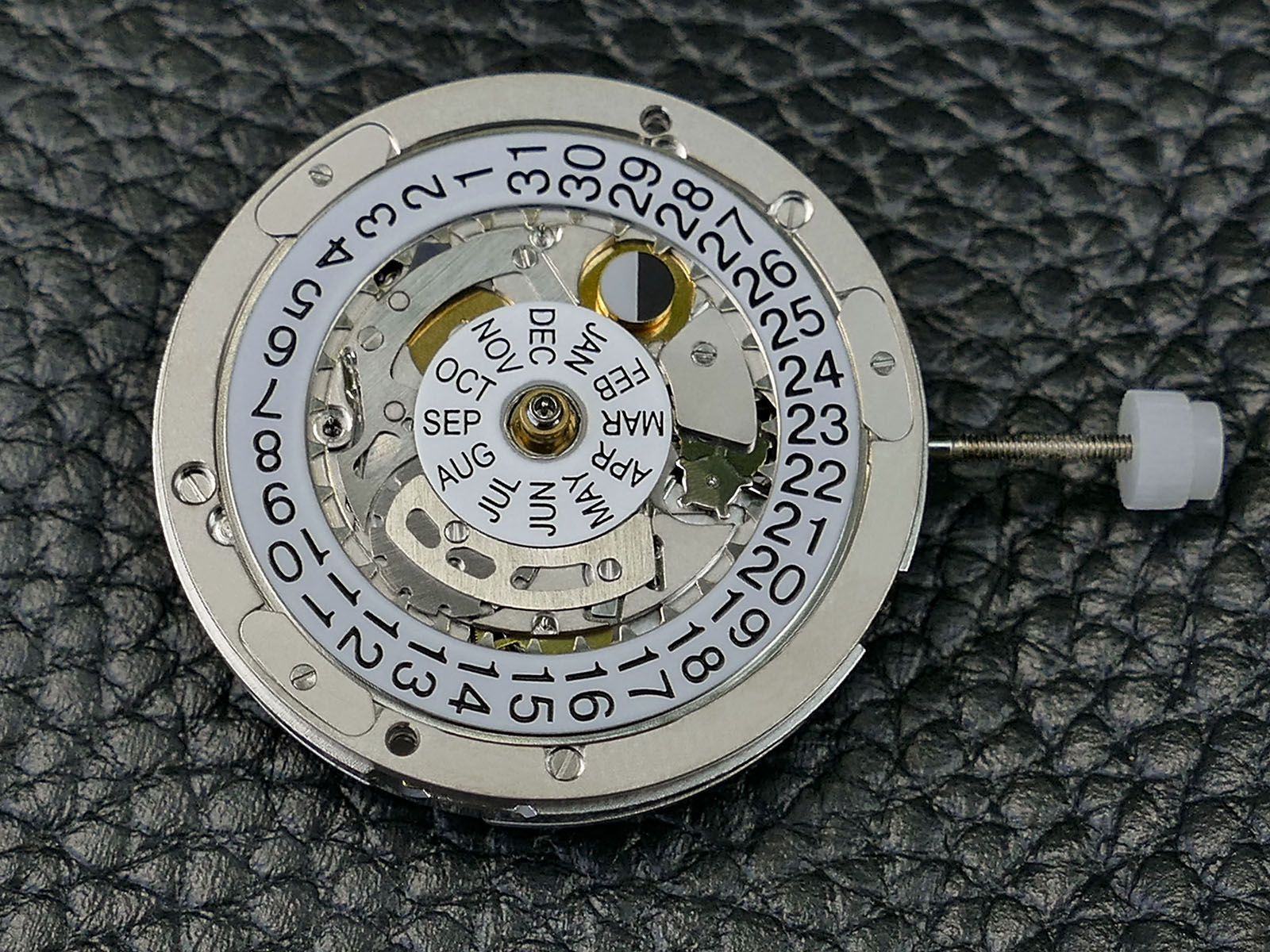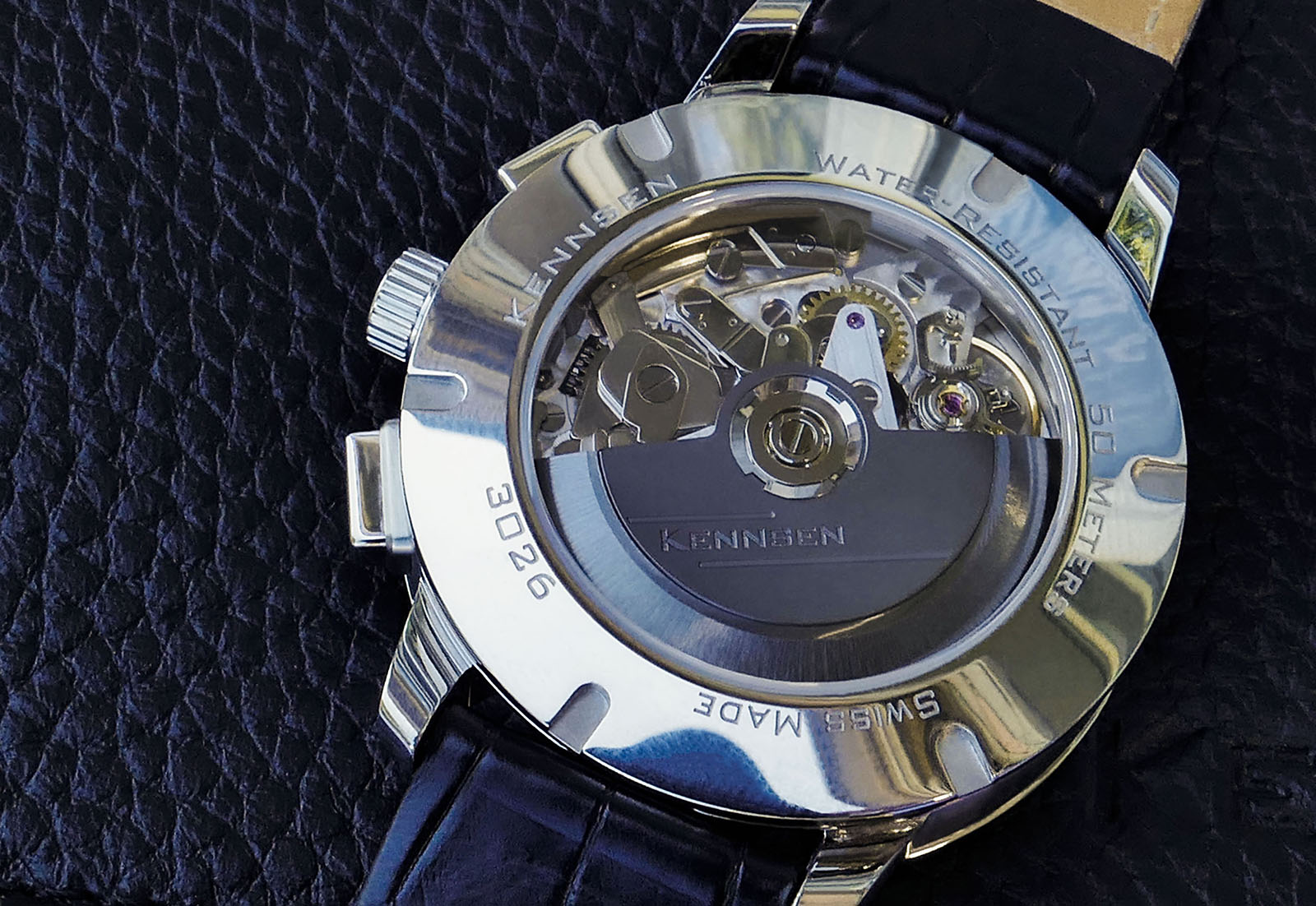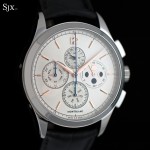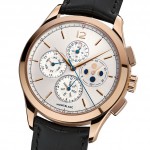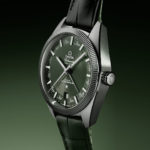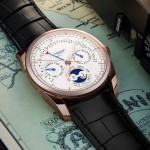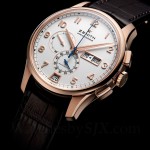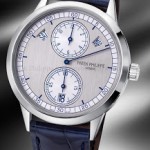Kennsen Debuts with the Smart & Affordable Annual Calendar Chronograph
Clever tech for little money.
Kennsen Watches makes its debut with a notably clever and well-priced annual calendar chronograph powered by a patented calendar module on top of a Valjoux 7750. Though Kennsen is newly set-up, its founder David Lea specialises in constructing complications for other brands, explaining the surprising degree of technical innovation for a small start-up.
Annual calendar chronographs are relatively uncommon on the market and most are fairly costly – Patek Philippe and Ulysse Nardin are amongst the handful of brands that offer one – making the new Kennsen the most affordable example today, with a retail price of just over US$5000.
Despite its affordability, the Kennsen annual calendar chronograph is entirely Swiss-made. The case is produced by Victorinox, the famed maker of Swiss army knives and also watches, while the module was designed by Lea & Associé – Mr Lea’s design outfit – and manufactured by a firm in the Vallée de Joux.
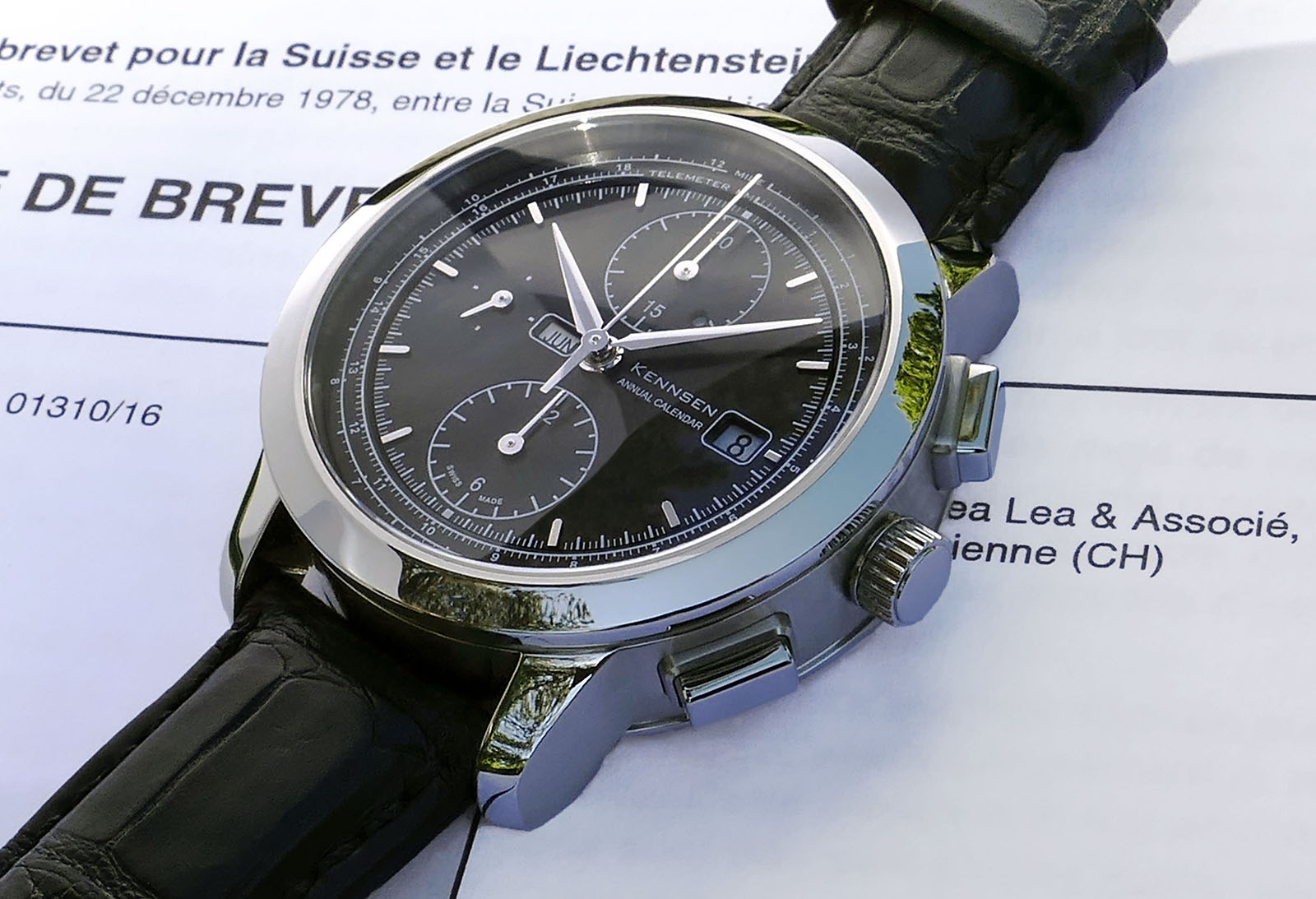
Made of stainless steel, the case is 42mm in diameter, with a polished bezel and case back, while the case band has a brushed finish.
The dial, available in either black or champagne, has a clean and pleasant design. It features recessed sub-dials, applied indices and a telemeter scale in miles and kilometres on the outer rim.
At one o’clock is a day and night indicator displayed in a small aperture, and nestled subtly next to the central axis of the dial is the month display, aligned on the same axis as the date at three.
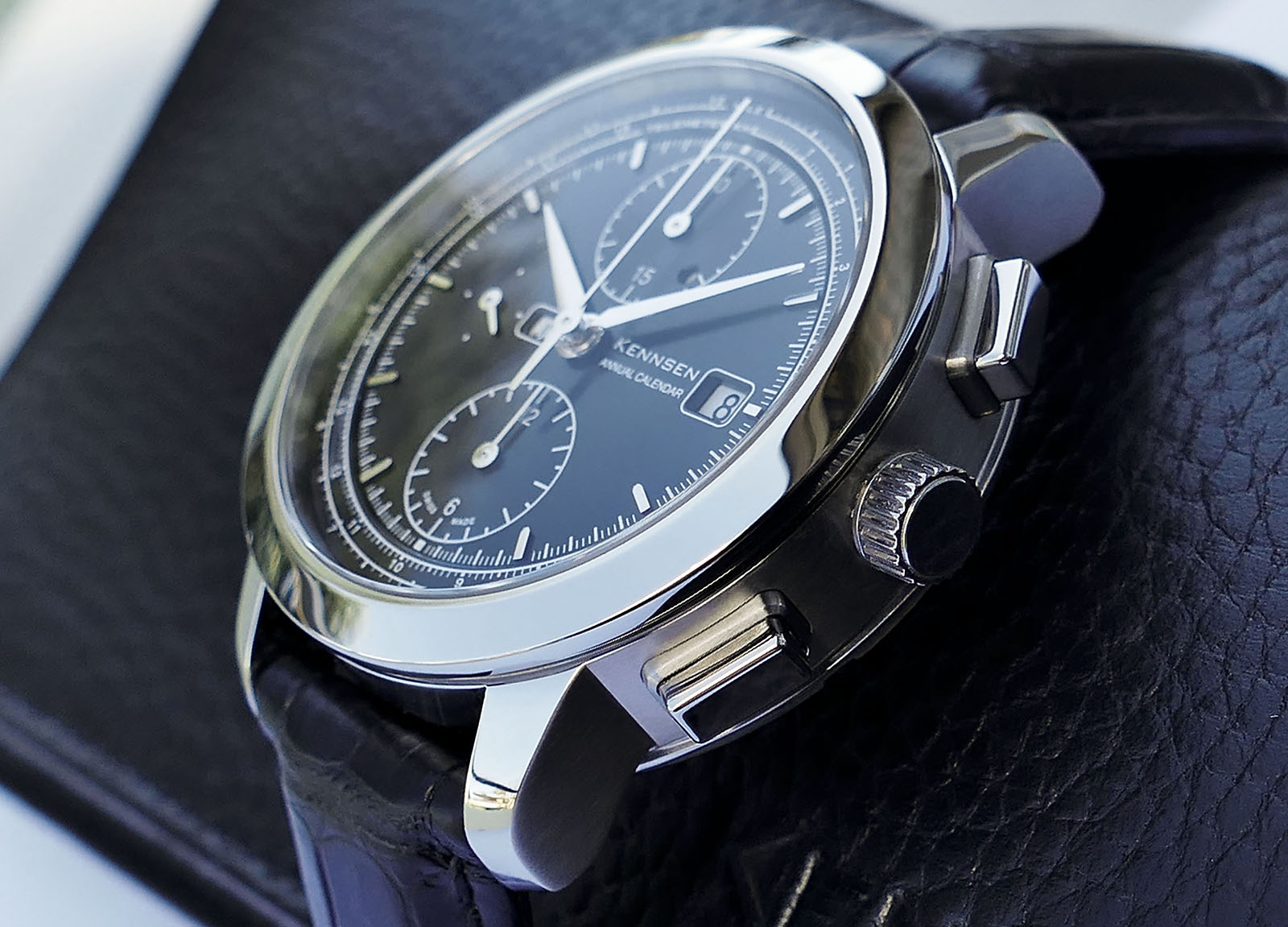
Clever but not thicker
The greatest feat of the watch, however, lies in being able to incorporate a calendar complication without adding any extra height to the movement or watch. That’s because the annual calendar module replaces the original calendar plate on the Valjoux 7750 – the calendar bits are 1.3mm high – and the movement remains 7.9mm high, exactly the same as the standard 7750.
The case is 13.4mm high, thick but still a tad slimmer than most other Valjoux 7750-powered chronographs. With the Valjoux 7750 already being a notably thick movement, the ability to retain its original height is a crucial accomplishment.
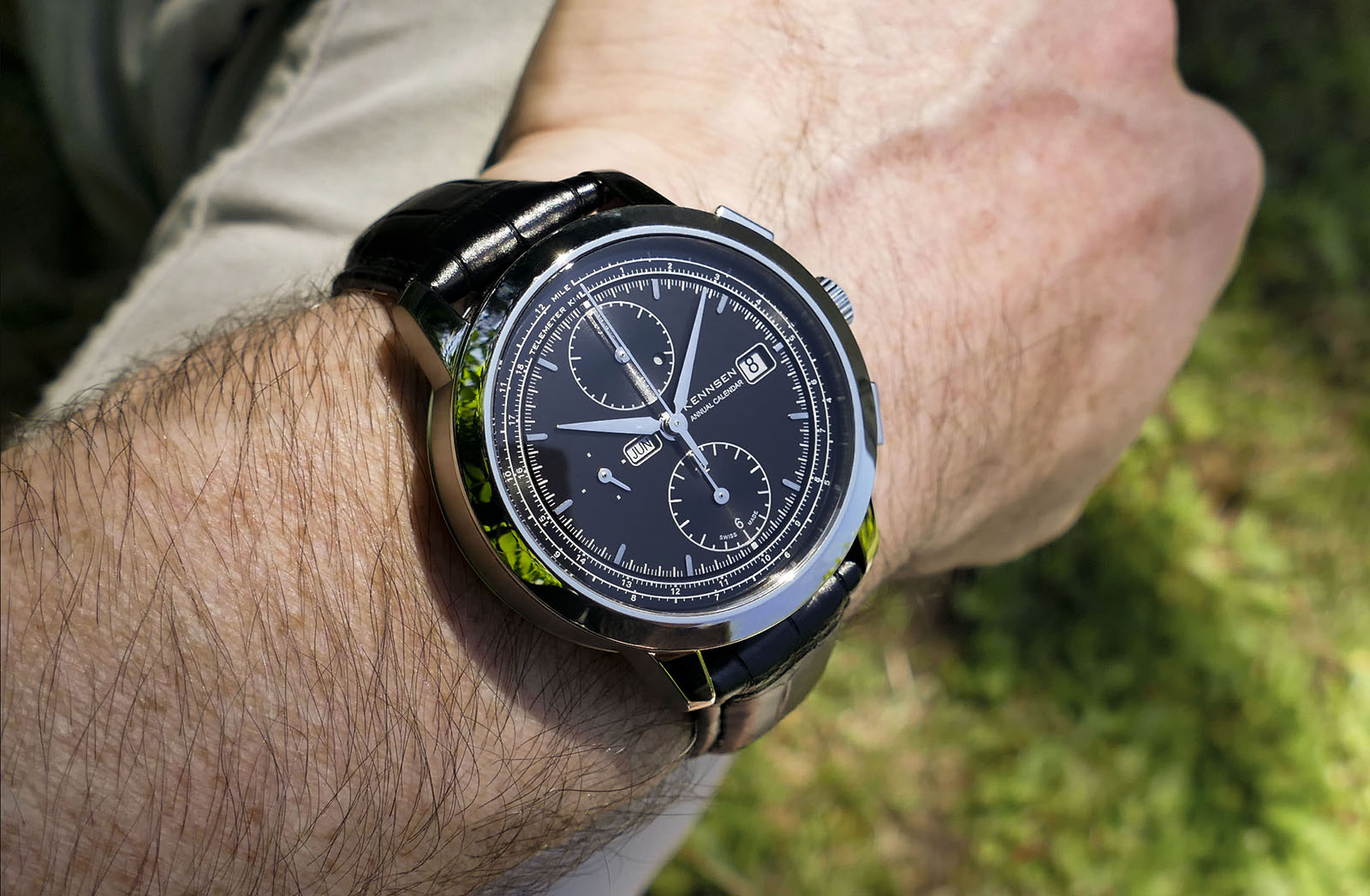
All that is thanks to its unique, patented calendar module. Designed by Mr Lea, a self-taught watchmaker, Kennsen’s annual calendar module is driven only by gears, without any levers, making it simple but robust. It is slightly more complex than its closest comparison, the Ochs und Junior annual calendar by horological inventor Ludwig Oechslin. Because of Kennsen’s construction, it is able to offer a conventional calendar display.
As shown on the dial, the calendar is indicated by two concentric discs underneath. The outer disc indicates the date and the inner one the month.
The calendar mechanism relies on a clever co-axial gearing that’s protected by two patents. The first patent (CH 708 962 A2) covers the mechanism of the month change. It illustrates a co-axially mounted annual wheel and month wheel, with the annual wheel driving the month wheel via an internal tooth.
An refinement of the design led to the two wheels being relocated to the centre of the movement and mounted co-axially on a pipe that lets the central hands pass through. This allows the month display to be as large as possible while not getting in the way of the pinions of the chronograph and calendar indicators.
Combined with a few other technical improvements, this resulted in a second patent (CH 713 000 A1). Specifically, it describes the unique design of the annual wheel, which is the heart of the annual calendar. It consists of 24 teeth of varying heights, with a pair of teeth representing a month. Teeth with recessed profiles represent long 31-day months while full height teeth encodes 30-day months. In comparison, conventional annual calendars will truncate the teeth lengths instead.
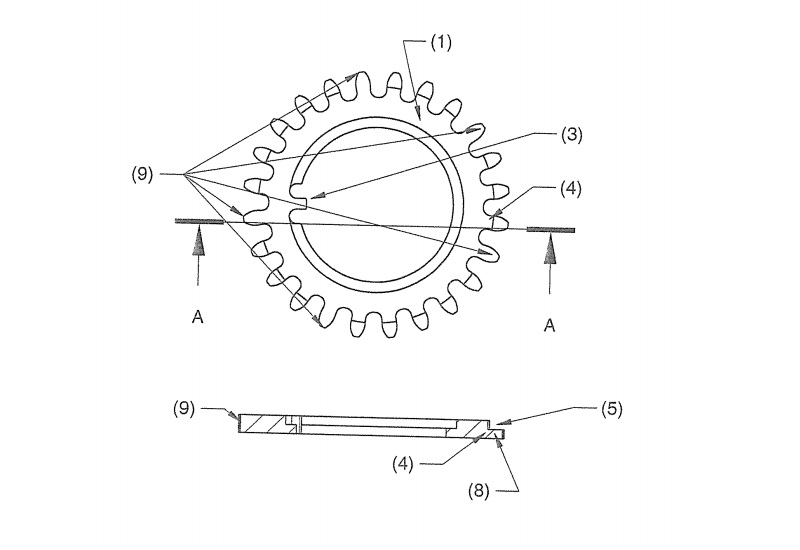
The annual wheel which encodes 30 and 31-day months via recessed tooth profiles (5), with the single internal tooth (3) driving the month wheel.
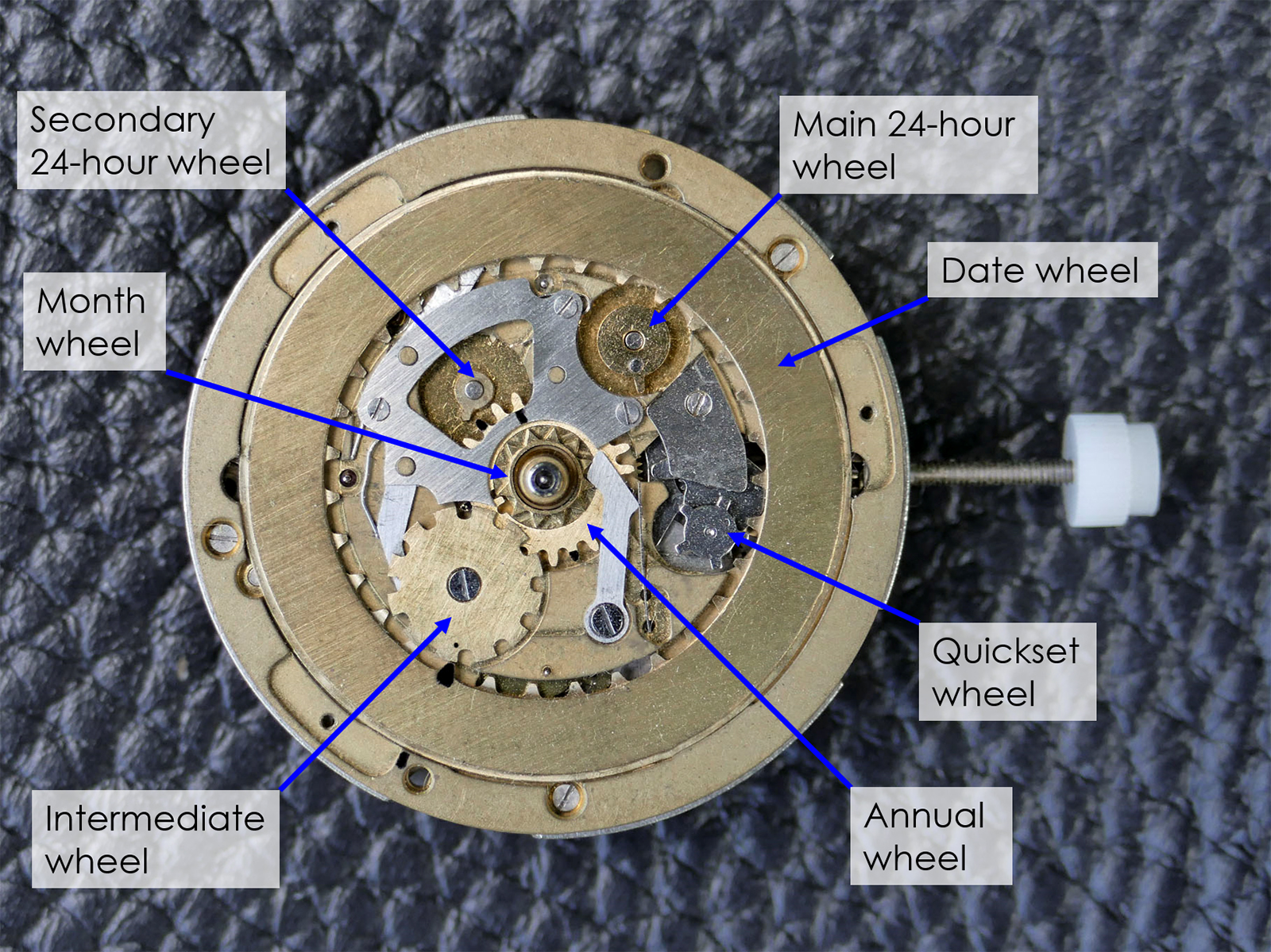
A brass prototype of the calendar module
Once a day, the main 24-hour wheel drives the date wheel a day forward. The date wheel has a single raised tooth, which impulses an intermediate wheel on the 30th day of the month.
The intermediate wheel in turn drives the annual wheel forward slightly – a sufficient distance to be engaged by a finger on the secondary 24-hour wheel. The engagement only occurs on 30-day months when the annual wheel has a full height tooth, allowing the finger to impulse it an extra step forward. This represents the skip of the 31st day on short months. The annual wheel then rotates forward enough to drive the month wheel via its internal tooth.
Thanks to the design of the annual wheel, it still retains full-length teeth that engages the intermediate wheel – resulting in low friction and a sturdy design. This is further supported by the relatively low part count of the annual calendar module.
Also, because the mechanism is driven primarily by the date wheel, all calendar corrections can still be made via the crown’s quickset date, eliminating the need for correctors on the case.
The movement is visible via the sapphire case back, and looks like an ordinary, albeit top-grade, Valjoux 7750 since all the inventions lie under the dial. It is decorated with perlage on the base plate and Geneva stripes on the bridges, while the rotor is customised with an anthracite finish.
Key facts
Diameter: 42mm
Height: 13.4mm
Material: Stainless steel
Water-resistance: 50m
Movement: KV775C (top-grade Valjoux 7750 base)
Frequency: 28,800bph (4Hz)
Power reserve: 48 hours
Strap: alligator leather (made by Hirsch)
Price and availability
The Annual Calendar Chronograph is priced at 5,180 Swiss francs and is available direct from Kennsen.
Correction July 18, 2019: Updated with an expanded and more accurate description of the annual calendar module, as well as corrected typos regarding the position of the calendar indicators.
Back to top.
